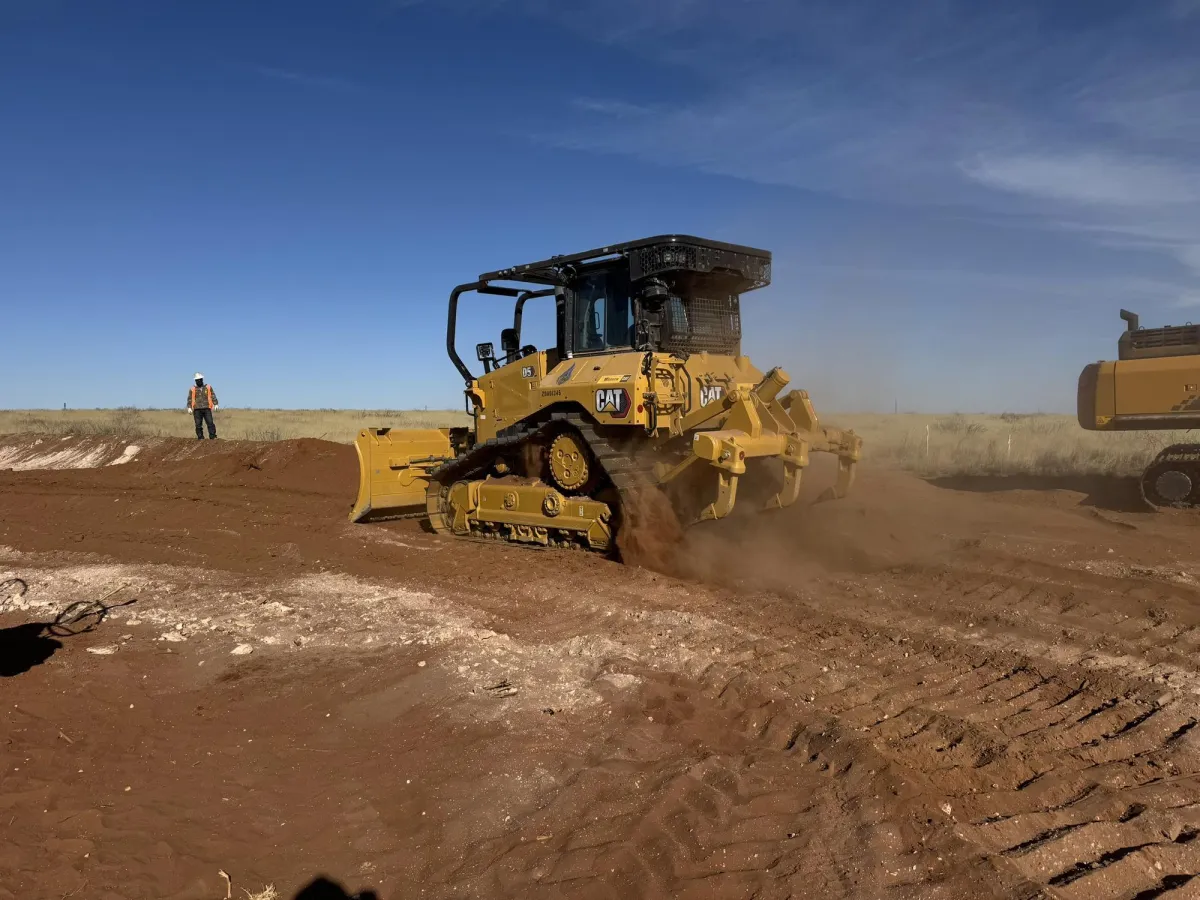
The Foundation of Every Project: How Dirt Construction Sets the Stage for Success
The Foundation of Every Project: How Dirt Construction Sets the Stage for Success
In oil and gas construction, every successful project starts with one critical, often overlooked component: dirt construction. Before pipelines are welded, rigs are drilled, or compressor stations go live, the first thing you need is a strong, stable foundation—and that means moving, shaping, and preparing the earth beneath your feet.
Dirt construction is a discipline built on precision, experience, and the kind of planning that ensures every step that follows—whether it’s pad construction, pipeline inspection, or frac pond development—happens safely and efficiently. At Xccelerated Construction Unlimited (XCU), we believe dirt work is where real progress begins.
What Is Dirt Construction?
Dirt construction refers to the process of preparing raw land for construction and infrastructure by altering its topography, compaction, and drainage characteristics. In the oil and gas industry, it plays a vital role in ensuring that any further construction—such as steel and poly pipeline installation, oilfield construction, and infrastructure like drilling rigs and compressor stations—can be carried out without delays or unexpected challenges.
This process typically includes land clearing, site grading, soil compaction, trenching, and the construction of access roads or work platforms. Each of these tasks requires strategic execution and detailed planning to account for soil conditions, weather, environmental regulations, and the load-bearing demands of the structures to come.
Land Clearing
Before any grading or trenching can begin, the land must be cleared of trees, vegetation, rocks, debris, and sometimes even existing infrastructure. The land clearing process is crucial to safety and accessibility. Removing obstructions ensures that machinery can access the site and that the terrain is workable for excavation and compaction.
Land clearing is especially important in remote oilfield construction areas where natural obstacles can slow down progress. At XCU, we use both mechanical and manual methods to ensure we’re respecting the environment while efficiently prepping the site.
Grading for Precision and Drainage
Once the land is cleared, grading begins. This involves reshaping the surface to meet specific elevation requirements and to create effective drainage. Poor drainage can lead to erosion, soil instability, and water damage to buried infrastructure like pipelines.
Grading isn’t one-size-fits-all. Depending on the site’s purpose—pad construction, pipeline routes, frac pond construction—the slope and elevation must be carefully engineered. At XCU, we use GPS-guided equipment to ensure accuracy, and we work closely with civil engineers to meet project specs.
Soil Compaction
Compaction is where dirt construction gets serious. Without it, nothing else will last. Properly compacted soil can support the immense weight of drilling rigs, heavy equipment, and loaded pipe trucks. It also reduces long-term settling, which can shift infrastructure and lead to pipeline repair or rework.
Our team tests soil density throughout the compaction process using moisture-density curves and Proctor tests. We understand the behavior of different soil types and how to adjust methods for compact soil that meets or exceeds industry standards.
Dirt Work and Pipeline Construction
In pipeline construction, dirt work extends beyond trench digging. It includes creating right-of-way (ROW) access roads, stabilizing the area around the pipeline easement, and prepping entry and exit pits for horizontal directional drilling (HDD). These elements must be precise to allow for safe, effective pipeline installation and inspection.
Whether it’s steel or poly pipeline, a stable trench bottom is critical. Uneven trenches can lead to stress points on the pipe, which may cause cracking or shifting over time. Backfilling and compacting the trench after laying the pipeline is equally important—it preserves the shape and protection of the buried infrastructure.
Infrastructure Needs Dirt Too
Dirt construction doesn’t end with trench work. It’s essential to building reliable infrastructure across oilfield projects. Compressor stations, frac ponds, and drilling pads all rely on compacted, graded surfaces that support both equipment and long-term use.
Frac pond construction, for example, requires soil that can retain water, support liner systems, and remain stable despite expansion and contraction from varying temperatures. Similarly, compressor stations and rig sites need reinforced subgrades to withstand vibrations, heavy loads, and the movement of equipment.
Long-Term Benefits of High-Quality Dirt Construction
Dirt work is one of those tasks where cutting corners can cost you dearly. Poor soil prep can cause pipe failures, access delays, erosion control issues, and even structural damage. But when dirt construction is done right, it offers long-term benefits that include:
Reduced maintenance and repair costs
Faster project timelines due to fewer delays
Safer work environments
Better environmental compliance
When you invest in good dirt work, you're investing in the overall health and productivity of your entire oil and gas operation.
How XCU Does Dirt Construction Differently
At XCU, we don’t just do dirt work—we specialize in it. We own and operate our fleet of excavation and grading equipment, which gives us full control over timelines, maintenance schedules, and site access. We’re not waiting on rentals, and we’re not outsourcing the foundation of your project.
Our team includes seasoned operators who understand how to work with soil in challenging conditions—whether it’s tight easements, sandy terrain, or high-traffic construction zones. We stay involved from start to finish, ensuring that your project has the strong start it needs.
We also understand that good dirt work must complement every other phase of your project. That’s why we coordinate with surveyors, pipeline inspectors, environmental engineers, and general contractors to align our work with the big picture.
Final Thought: Every Project Starts with the Ground Beneath It
Dirt construction may be the first thing to happen on a site, but it affects every stage that follows. From oilfield construction and pad preparation to pipeline repair and infrastructure development, nothing gets done right unless the ground is ready.
If you're looking for a pipeline company that values precision, planning, and long-term success, XCU is ready to help. We bring our experience, equipment, and commitment to every job—because we know the importance of building from the ground up.
About Us
Xccelerated Construction Unlimited (XCU) started in January 2016, dedicated to top-quality pipeline construction in the U.S. XCU's founders, Mark and Kayla Bird, fueled its growth, expanding from 5 to over 250 professionals. XCU's journey is marked by excellence, innovation, partnerships, safety, and sustainability, shaping them into a respected and valued construction entity throughout the industry.



